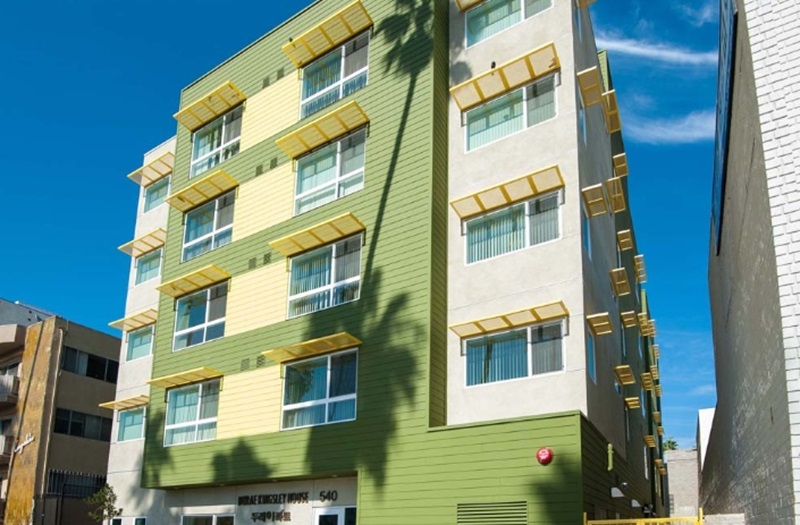Koreatown, one of the most densely populated areas in Los Angeles, is home to many low-income residents and seniors who are struggling with unaffordable rent prices.
These individuals often dream of securing a spot in government-subsidized housing for low-income and senior citizens. However, the reality of waitlists thousands of names long leads to deep frustration. On average, the wait time for such housing is around 10 years making getting a spot feel akin to winning the lottery.
As of July 1, 2024, an analysis of the LA Housing Department website shows no affordable housing units, public housing, or affordable senior housing currently accepting new tenants.
There are 124 buildings with 6,602 units designated for low-income and senior residents in Koreatown. Of these, 74 buildings with 3,229 units have currently stopped accepting new applications, while the remaining buildings are only adding names to waitlists with no guarantee of availability.

Since 2016, the non-profit Korean Resource Center has been operating two senior apartment buildings with a total of 67 units in Koreatown, funded by the federal government.
According to the manager of these apartments, there are currently about 3,000 people on the waiting list, and new applications are not being accepted due to the overwhelming demand. The manager mentioned that about 10 low-income residents and seniors inquire about housing availability daily, but there simply are no units available, leaving them to wait indefinitely.
The Korean Youth and Community Center, another non-profit, manages 10 low-income and senior apartments with 348 units in Koreatown. The center reports that all units are occupied and the waitlist is extensive, with new applicants needing to wait approximately 10 years.
This housing crisis stems from a severe imbalance between supply and demand. While the number of applicants continues to rise, the availability of affordable housing remains critically low.
Koreatown is the most densely populated area in LA, with 114,000 residents living within a three-square-mile area. This density is more than double that of Downtown LA, Central City & Boyle Heights, and Mid-Wilshire. Naturally, the population includes a significant number of low-income households and seniors.
Along with the high population density, there is a dire shortage of affordable housing for low-income residents and seniors in Koreatown. New apartment constructions are abundant, but most are high-end units with rents far beyond the reach of low-income households.
This shortage exacerbates the economic difficulties faced by these residents, as even rent-controlled apartments, which offer legally protected low rents, are gradually disappearing due to new developments. The victims of this trend are predominantly low-income residents and seniors.
Non-profit organizations criticize the policies of the U.S. Department of Housing and Urban Development and the California state government for supporting private developers rather than directly building apartments for low-income and senior residents.
Despite receiving significant benefits, such as tax credits, low-interest loans, and grants, private developers allocate only about 10% of their units to low-income households and seniors.
While the City of LA runs programs like Transit Oriented Communities and Density Bonus to secure housing for low-income residents by offering incentives for new constructions near public transport or in high-density areas, these programs fall short of meeting the demand. Additionally, there are concerns about the transparency of the rental processes for the affordable units within these privately developed apartments.
Government-managed low-income and senior apartments maintain a transparent system through public announcements, applications, and random computer drawings. However, the selection process for affordable units within privately developed buildings is often opaque, relying on insider connections and undisclosed information, which fails to ensure housing stability for low-income residents.
The most effective solution would be for the city government to directly develop and manage apartments for low-income and senior residents. Unfortunately, such developments in this area have been scarce.
The City of LA and the California state government need to prioritize not only the resolution of the homelessness crisis but also the expansion of housing facilities for low-income residents and seniors. Additionally, there should be regular inspections of the operations of existing units to ensure they meet the needs of the community.
By Mooyoung Lee lee.mooyoung@koreadaily.com

![Clovine accelerates global expansion in collaboration platform market Website of Clovine, a cloud-based project management provider [Screenshot]](https://www.koreadailyus.com/wp-content/uploads/2025/04/0403-clovine-100x70.jpg)

![Hangar images indicate North Korean advances in military drone domain Satellite photos taken on March 28, included in Beyond Parallel's report on North Korea, shows what appears to be seven new drone hangars at the Banghyon Air Base. [SCREEN CATPURE]](https://www.koreadailyus.com/wp-content/uploads/2025/04/0402-Hangar-100x70.jpg)
